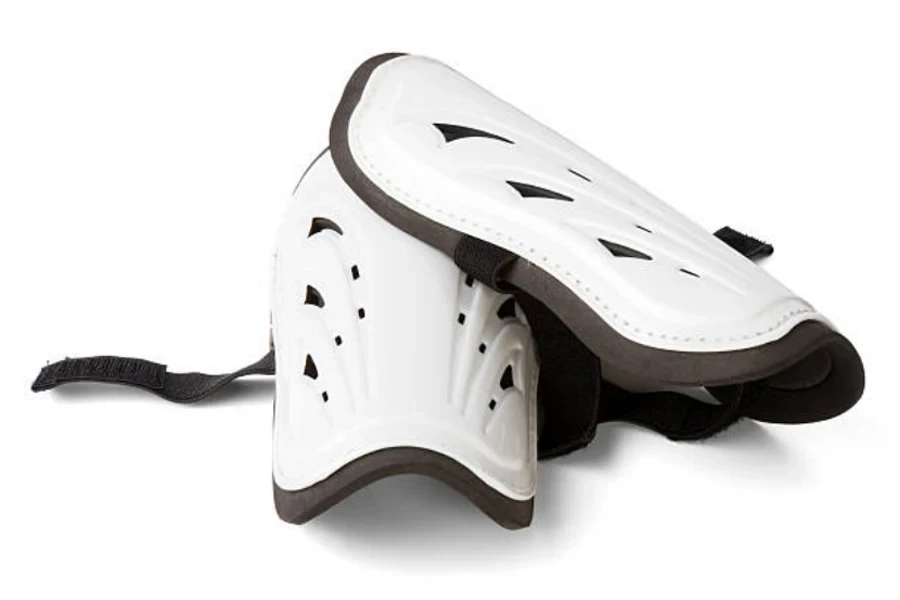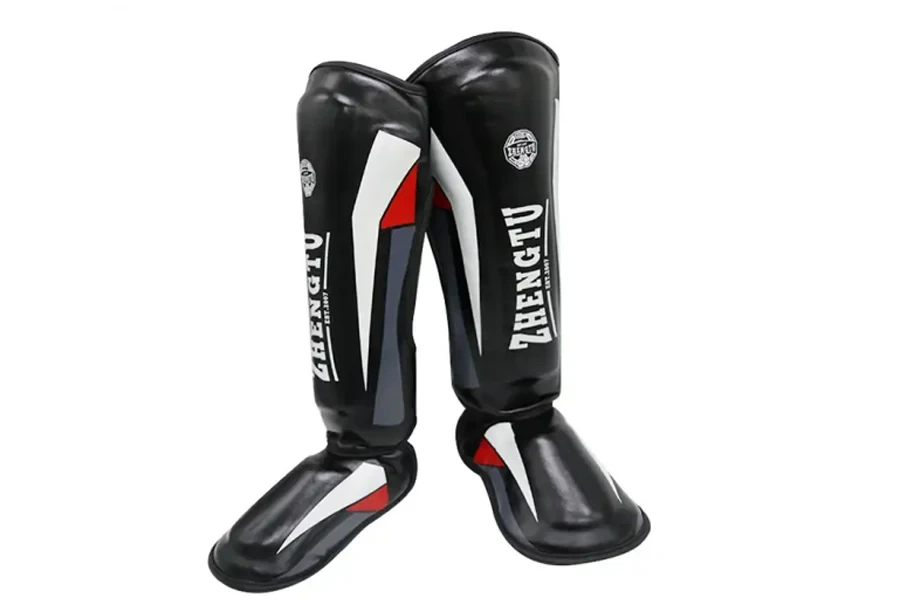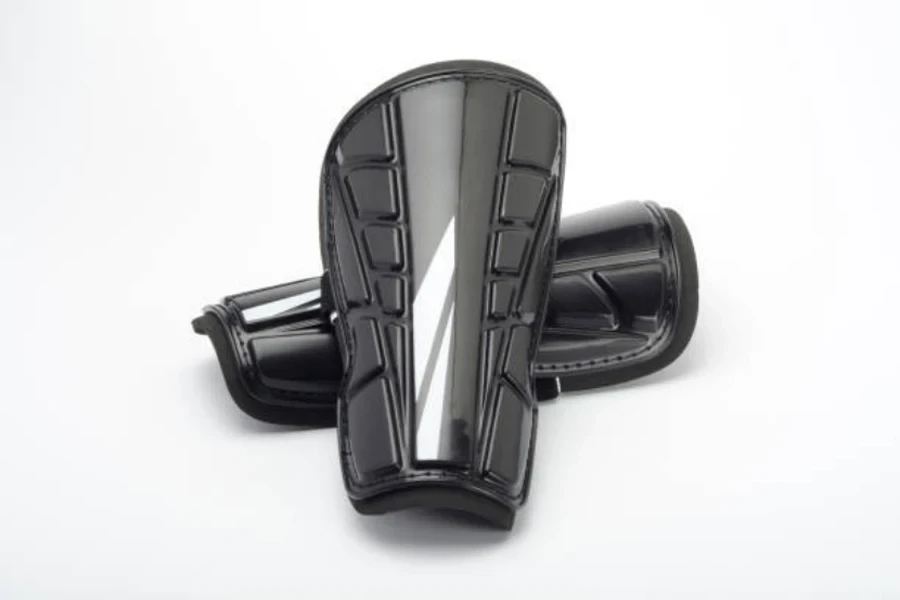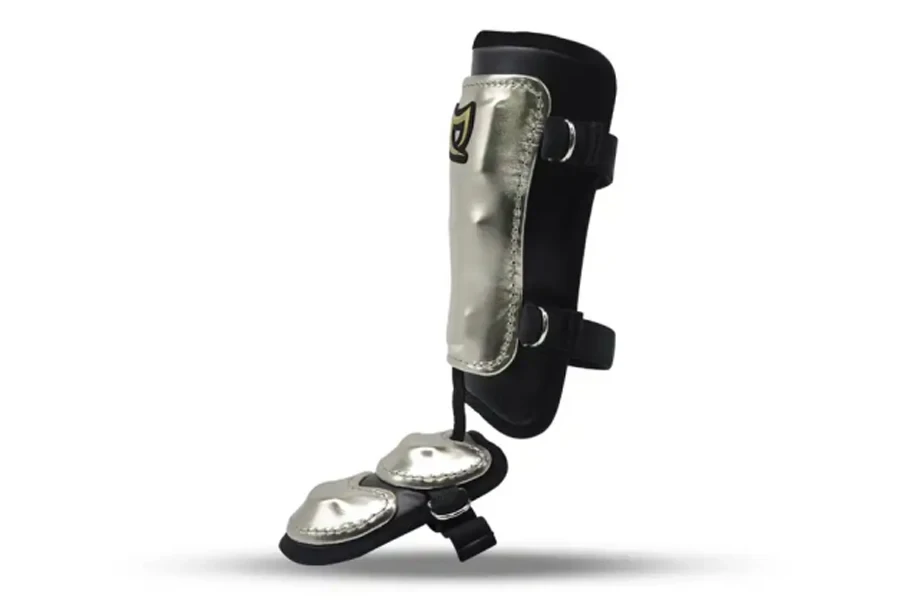In the dynamic world of sports equipment, shin guards stand as a crucial protective gear, pivotal for safeguarding athletes during games. As 2024 unfolds, the evolution of shin guard technology and design continues to redefine sports safety and performance. These guards are not just a mandatory accessory for players; they are a testament to the advancements in sports science and material engineering. Their role extends beyond mere protection, contributing significantly to the confidence and agility of players on the field. This evolution reflects a deeper understanding of athlete needs and the relentless pursuit of innovation in sports gear. For those in the industry, staying abreast of these developments is key to providing athletes with the best possible equipment, ensuring both safety and peak performance.
Table of Contents:
1. Types and uses of shin guards
2. 2024 market insights for shin guards
3. Key considerations in shin guard selection
4. Leading shin guard models and their features
5. Conclusion
Types and uses of shin guards

Shin guards, an essential component in sports gear, have evolved significantly, catering to diverse needs across various levels of play. The market offers three primary types: slip-in, ankle, and sock style shin guards, each designed with specific functionalities and user preferences in mind.
Differentiating shin guard types
Slip-in shin guards are known for their lightweight and minimalistic design. They are typically used by players who prioritize agility and freedom of movement. These guards are slipped directly into the socks or held in place with sleeves, making them a popular choice among advanced players who require less restrictive gear. Their streamlined design allows for greater mobility, crucial in high-paced games.
Ankle shin guards, on the other hand, offer more comprehensive protection. They extend coverage to the ankles, providing additional safety, especially for younger or less experienced players who might be more susceptible to injuries. These guards often come with a stirrup or strap that goes under the foot, ensuring the guard stays in place during vigorous movements. While they offer enhanced protection, they can be slightly bulkier and may restrict movement compared to slip-in types.
Sock style shin guards represent a blend of convenience and protection. Integrated directly into the sock, these shin guards provide a comfortable, all-in-one solution. Particularly favored in youth leagues, they simplify the process of gearing up and ensure that the shin guard stays in place. However, they might offer less protection and customization compared to the other types.
Usage scenarios for various shin guard types

The choice of shin guard type largely depends on the level of play and individual preferences. Professional players often lean towards slip-in shin guards for their lightweight feel and flexibility, allowing for swift movements and quick responses. In contrast, recreational or youth players might prefer ankle shin guards for their comprehensive protection, reducing the risk of injuries during play. Sock style shin guards are an excellent choice for convenience and ease of use, particularly for younger players who are still getting accustomed to wearing protective gear.
Understanding these nuances is crucial for those in the industry, as it enables them to cater to the specific needs of different player segments. By offering a range of shin guards that align with various playing styles and protection requirements, they can ensure that players at all levels have access to the appropriate gear, enhancing both safety and performance on the field.
2024 market insights for shin guards

The shin guard market in 2024 is marked by significant advancements and evolving consumer preferences.
Market insights in shin guards
In the realm of design and materials, the current trends are heavily focused on lightweight materials and ergonomic designs. These innovations are not just about enhancing comfort; they represent a deeper commitment to improving athletic performance and safety. The integration of advanced materials ensures that shin guards are not only protective but also contribute positively to the agility and speed of players.
From a market perspective, the global Soccer Shin Guards market is experiencing robust growth. Valued at USD 232 million in 2021, the market is projected to expand to USD 381.47 million by 2031, growing at a compound annual growth rate of 5.09%. This growth trajectory underscores the increasing demand for innovative shin guard products that align with the latest technological advancements and shifting consumer preferences.
Current trends and consumer preferences
Consumer trends in the shin guard market are increasingly leaning towards products that are perceived as healthier and more natural. This shift is a reflection of the growing consumer awareness of health and wellness, influencing their choices in sports equipment. Additionally, the market is witnessing a surge in demand for eco-friendly and sustainable products. This trend is not just a passing phase but a significant movement shaping the future of sports equipment manufacturing.
The market’s expansion is further propelled by significant investments from key players in the industry. These investments are primarily focused on the development of new products and the expansion of distribution networks, which in turn are expected to stimulate future demand and drive market expansion.
In summary, the shin guard market in 2024 is characterized by a blend of innovative design trends, growing consumer health consciousness, and a strong market growth trajectory. As the market continues to evolve, these trends are expected to drive growth and advance innovation within the industry, making it an exciting time for those involved in the production and distribution of shin guards.
Key considerations in shin guard selection

In the selection of shin guards, two key considerations stand paramount: adherence to safety standards and the balance between comfort, protection, and mobility. These factors are crucial in ensuring that the shin guards not only meet the required safety protocols but also cater to the diverse needs of athletes.
Safety standards and certifications
When selecting shin guards, the adherence to safety standards and certifications, particularly those set by the National Operating Committee on Standards for Athletic Equipment (NOCSAE), is paramount. NOCSAE’s standards for soccer shin guards, as outlined in their specification ND090-06m18, establish rigorous performance requirements for newly manufactured shin guards. These standards are not mere guidelines but are critical benchmarks that ensure the shin guards provide adequate protection against the types of impacts athletes face during play.
The NOCSAE standards encompass various aspects of shin guard design and performance. For instance, they specify the extent of protective coverage required based on an athlete’s height, ensuring that the shin guard offers sufficient protection for the intended user. This attention to detail in the standards ensures that every shin guard in the market meets a baseline level of safety and effectiveness.
Manufacturers and distributors must ensure that their shin guard products bear the NOCSAE seal of approval. This seal is not just a mark of quality but a reassurance to athletes and coaches that the equipment has been tested and meets the highest safety standards. In high school and collegiate sports, for instance, shin guards stamped with the NOCSAE seal are often a requirement, underscoring the importance of these certifications in competitive play.
Balancing comfort, protection, and mobility

In the selection of shin guards, achieving a balance between comfort, protection, and mobility is crucial. Recent advancements in materials and design have significantly contributed to this balance. For instance, the use of composite materials in shin guards has been a game-changer. These materials offer high strength-to-weight ratios, ensuring robust protection without adding unnecessary bulk. This means that athletes can enjoy high levels of protection while still maintaining agility and speed on the field.
Studies have shown that the effectiveness of shin guards in preventing injuries like tibia fractures is significantly enhanced by these technological advancements. For example, the incorporation of energy-absorbing materials in shin guard structures has been found to reduce the risk of severe injuries during high-impact collisions. This is particularly important in sports like soccer, where the lower legs are frequently exposed to potential injury-causing impacts.
Moreover, ergonomic designs in shin guards have evolved to provide a more comfortable and secure fit. These designs take into account the natural contours of the leg, ensuring that the guards stay in place without restricting movement. This is crucial for athletes, as ill-fitting shin guards can lead to discomfort and distraction, potentially impacting performance.
The latest in shin guard technology also includes features like improved ventilation systems. These systems help in reducing heat and sweat accumulation, thereby enhancing comfort during extended periods of play. This aspect of design not only contributes to comfort but also to the overall health of the skin in contact with the guard.
In conclusion, the selection of shin guards hinges on a thorough understanding of safety standards and the ability to strike a balance between comfort, protection, and mobility. For manufacturers and distributors, staying informed about these aspects is crucial in providing products that meet the evolving needs of athletes while ensuring their safety and performance on the field.
Leading shin guard models and their features

In 2024, the shin guard market is dominated by several leading models, each boasting unique features and technological advancements.
Review of top models in 2024
The Nike Mercurial Lite is renowned for its ultra-lightweight design, which does not compromise on protection. It utilizes a tough, yet flexible material that conforms to the leg’s shape, providing a comfortable fit while ensuring safety. The Mercurial Lite is particularly favored by professional athletes for its blend of minimalism and functionality.
Adidas X League shin guards are another top contender, known for their ergonomic design and superior protection. They feature a hard shield with EVA backing, offering both comfort and resilience against impacts. The X League model is designed to cater to a wide range of athletes, providing a snug fit that adapts to various leg shapes.
G-Form Pro-S Elite shin guards represent the pinnacle of innovation, utilizing Reactive Protection Technology. This technology allows the shin guards to remain soft and flexible during play but harden upon impact, offering unparalleled protection. Additionally, they are machine washable, adding a layer of convenience for users.
In summary, each of these models caters to different needs and preferences. The Nike Mercurial Lite is best suited for players who need minimal interference with their natural movement. The Adidas X League is ideal for those who require more comprehensive protection, and the G-Form Pro-S Elite is perfect for players seeking cutting-edge technology in protection. Understanding these differences is crucial for professionals in the industry to cater to the diverse needs of athletes.
Comparative analysis of additional best choices

Malker Shin Guards for Kids are designed with the young athlete in mind. They offer fundamental protection with a lightweight material, making them an excellent choice for younger players or beginners. Their slip-in design enhances comfort, a crucial factor for children who may find traditional shin guards uncomfortable.
Franklin Soccer shin guards are another solid option, especially for parents seeking affordable yet effective protection for their children. These guards feature a dense plastic shell for physical protection and a foam cushion on the back to absorb impact. The use of straps ensures that the guards stay securely in place, providing peace of mind during play.
Vizari Malaga Shin Guards are designed for players who prioritize ankle protection. They offer enhanced safety during play with extra protection around the ankle area. These guards are suitable for players who want a higher level of safety in their gear.
Puma Ultra Flex shin guards cater to players across various levels, offering flexibility without compromising on protection. Their highly durable softshell is designed to provide both comfort and safety, making them a versatile choice for players who value flexibility in their protective gear.
Each of these shin guard models caters to different preferences and needs, from ultimate protection and secure fit to budget-friendly options and innovative sleeve designs. Understanding these differences is crucial for professionals in the industry to cater to the diverse needs of athletes.
Conclusion
Selecting the right shin guards in 2024 is a nuanced decision that hinges on balancing safety standards, comfort, protection, and mobility. With the market offering a range of models, each catering to different needs, the choice boils down to individual requirements and playing conditions. The advancements in materials and design have made shin guards more than just protective gear; they are now integral to enhancing performance on the field. For those in the industry, understanding these evolving needs and the latest technological innovations is key to providing athletes with shin guards that not only ensure safety but also augment their playing experience.




